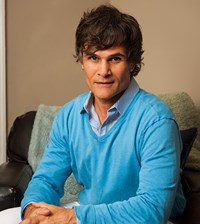 I’m reaching out to all women reading this, please help me understand something: Why are more and more women who are diagnosed with breast cancer opting to have a double mastectomy, despite the fact that removing the healthy breast adds no increase in life expectancy, whatsoever? Can you please explain what’s going on here.
I’m reaching out to all women reading this, please help me understand something: Why are more and more women who are diagnosed with breast cancer opting to have a double mastectomy, despite the fact that removing the healthy breast adds no increase in life expectancy, whatsoever? Can you please explain what’s going on here.
I want to hear from women (and men who think they might understand) in their own words, because I see an incredible psychological and sociological phenomenon happening. According to new research conducted at the University of Minnesota, Minneapolis, there has been a dramatic rise in women diagnosed with cancer in one breast to have both breasts removed for preventative reasons.
There has been a 188% increase in women choosing the “contralateral prophylactic mastectomy” surgery, and it has researchers baffled. It has me baffled, too; here’s why: The 10-year survival rate for women with ductal carcinoma in situ (DCIS) is 98-99%–that is outstanding! According to Todd Tuttle, one of the scientists on the study,
“Removal of the normal contralateral breast will not improve the excellent survival rates for this group of women. Nevertheless, many women, particularly young women, are choosing to have both breasts removed.”
So, once again, I ask why. This is not an isolated incidence–it’s happening with unusual regularity. Is it a symmetry thing? Is it aesthetic? Is it to not be reminded of the diseased or lost breast. I imagine being a male puts me at a psychological disadvantage to understanding a woman’s thoughts and feelings–or connection–to her breasts. I know it seems odd to say that, since I must have a connection to my testicles, but I don’t think I would opt for removal of a healthy testicle in the event of testicular cancer. And anyway, this doesn’t seem to be happening to men who lose a testicle. But, of course, I am not in that situation, so I wouldn’t really know how I’d react, anyhow.
The researchers also concluded that more studies would be needed to understand “the complex decision-making process leading to contralateral prophylactic mastectomy.” But until then, maybe you could give me your thoughts.












